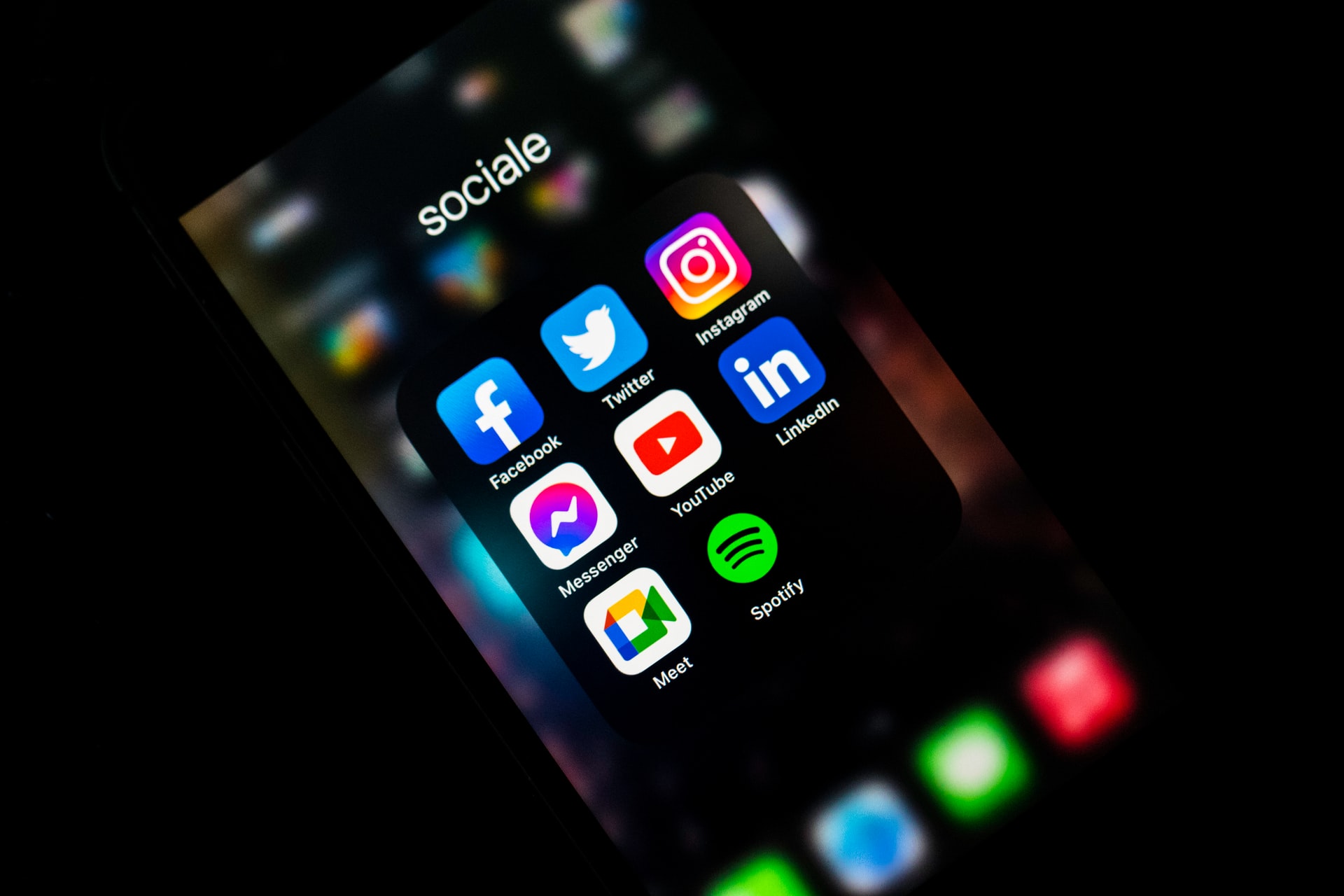Skyrocketing Conversions: 6 standout social media strategy examples to inspire your own
This article has been contributed by Freya Kuka
Quick Links
For a lot of brands, social media used to be seen as something of a luxury. It was nice to have a few thousand followers, but it was more about vanity than real-world results.
But things have changed. With the global social commerce market set to hit nearly $3.4 trillion by 2028, it’s clear that any company aiming to make money online needs an effective social media strategy.
Instagram is an excellent case in point. Thousands of ecommerce stores use the highly visual platform to reach their audience and drive sales. And evidence suggests it works, with 50% of Instagrammers following a business, and 60% saying they use Instagram to learn about products and services.
Ready to step up your own social game? Check out these six social media strategy examples to help you drive conversions.
Best Social Media Strategy Examples #1: Optimize User Journeys for Mobile
Mobile has accounted for roughly half of all internet traffic for the last four years, reaching 54.8% in the first quarter of 2021.
And that proportion is much higher for predominantly mobile-based platforms like Instagram and TikTok.
So if you’re going to drive conversions through social media, it’s vital you plan out the buyer journey with mobile users in mind.
ASOS shows us exactly how to do it. When you hit the link on the fashion ecommerce giant’s Instagram page, you’re taken to a Linktree menu directing you toward the brand’s key landing pages:
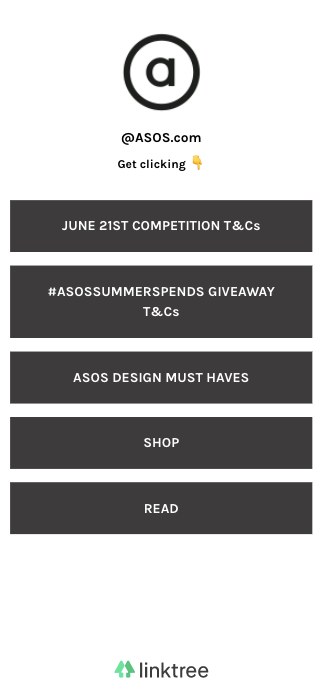
Whichever one of those links you click, ASOS presents you with a mobile-optimized landing page. For instance, here’s the ASOS Design Must-Haves page:
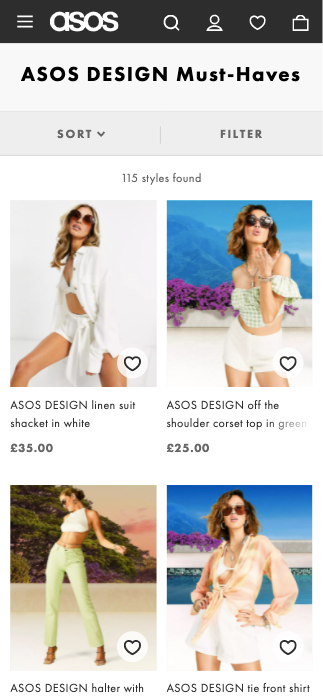
No intrusive text taking up the first half of the screen. No hard-to-click links or buttons to spoil the mobile user journey. Just a list of products with prominent imagery that shows it off effectively without feeling obtrusive.
In fact, it hardly feels like you’ve left Instagram at all – it’s still the same mobile-friendly, image-heavy experience. With such a seamless progression from social to landing page (and from landing page to product page to checkout), it’s so easy for mobile users to convert there and then.
Best Social Media Strategy Examples #2: Use Social for Lead Generation
When you hear the phrase “lead generation”, you naturally think of B2B brands. In the B2B realm, the buying process can last for weeks or months, so it’s vital to capture prospects’ personal information and target them with impactful content until they’re ready to purchase.
While B2C buyer journeys are measured in minutes rather than weeks, lead gen is just as important to consumer-facing brands.
So whether you’re selling business services to CEOs or sunglasses to Millennials, lead generation is a valuable way to drive conversions through social media.
Why?
Because once you’ve captured a user’s details, you can send them targeted content via email – and email marketing offers a return on investment of up to 4,400%.
In this example, Nike demonstrates how to capture leads through social media. The sportswear giant’s Instagram page features a prominent website link in the bio:
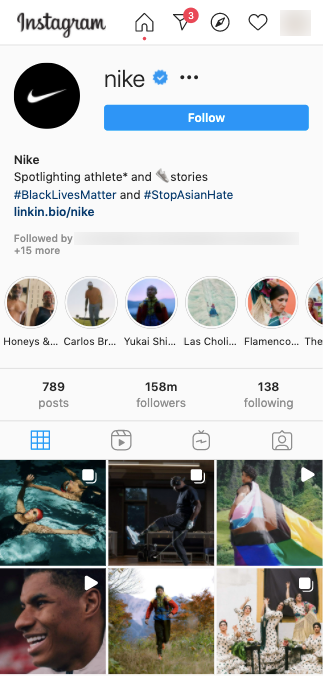
Hit that link and you’re taken to a mobile-optimized landing page that prompts users to sign up for a Nike Membership.
This page includes a call to action promoting free shipping and 60-day returns for members, alongside copy highlighting additional benefits like early access to the latest Nike products:
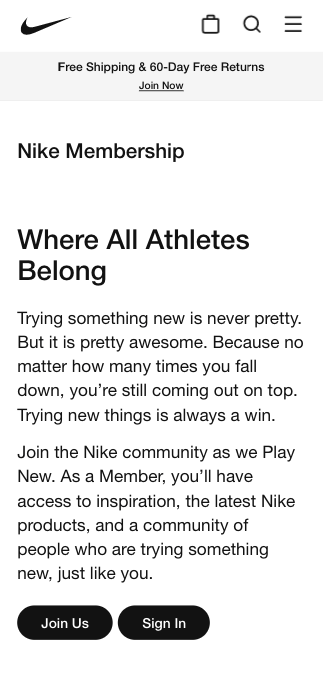
Bear in mind this is the first thing you see when clicking through from Instagram. Not a landing page packed with products or discounts, but a sign-up form. That demonstrates the value of lead generation to a company like Nike – and if it’s good enough for one of the world’s biggest brands, it’s definitely worth considering for your own social media strategy.
The value of social media promotion cannot be understated. It works for any industry and it is taking advantage of an audience you already have. For example, personal injury lawyer Jay Knispel focuses on making sure their Facebook audience knows where to find them if they need law services:
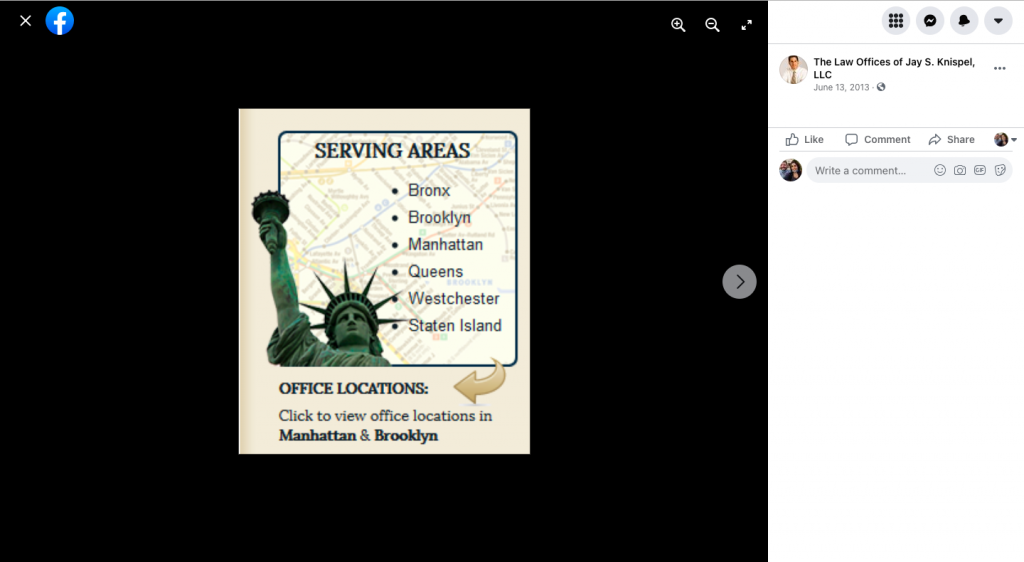
Best Social Media Strategy Examples #3: Leverage the Power of Influencer Marketing
Influencer strategies aren’t just about persuading beautiful people with big social followings to use your products – they’re a fantastic source of conversions, too.
In fact, research from TapInfluence shows that in the right conditions, influencer marketing can deliver 11 times the return of any other digital marketing tactic.
Done right, working with influencers or brand ambassadors can put you in front of a much larger audience, raising awareness of your brand and driving sales. That’s a pretty powerful combination.
However, influencer marketing often gets a bad name. Lots of brands have thrown big money at high-profile influencers with massive followings – soccer star Cristiano Ronaldo reportedly charges north of $1.6 million for a single post – only to end up with minimal engagement.
That’s why smart brands ignore the A-listers and instead team up with micro-influencers. These are much smaller accounts, perhaps with only a few thousand followers to their name.
But what they lack in reach, they more than make up for in authenticity. Find a micro-influencer who’s genuinely passionate about your products and they’ll promote them in a much more impactful, meaningful way.
Coca-Cola worked with a handful of European micro-influencers in its #ThisOnesFor campaign:
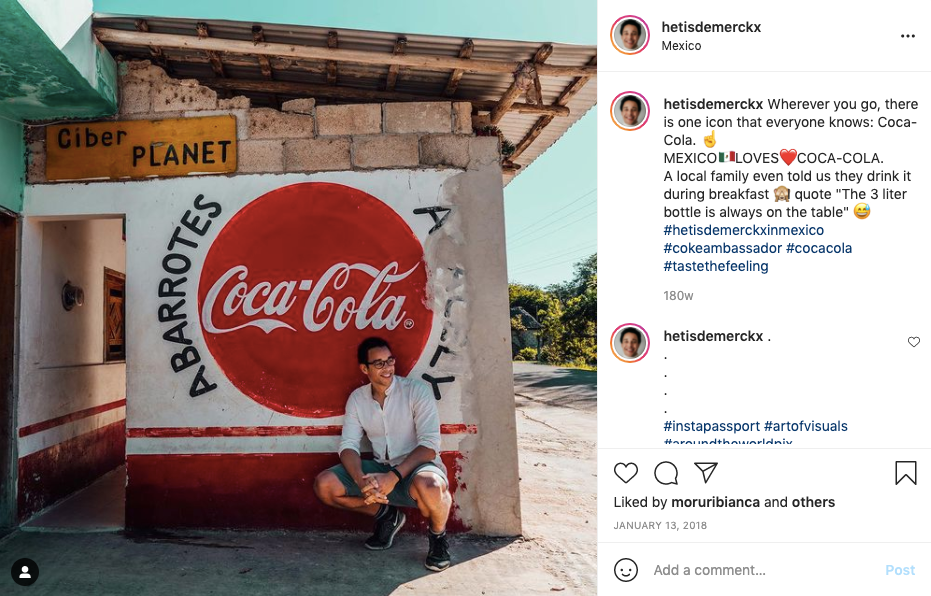
Sure, these aren’t tiny accounts – Yannick Merckx, who posted the above example, has 44,000 followers. But compared to Coca-Cola’s 2.8 million followers, that’s pretty small fry.
However, because the campaign theme aligned with the type of content that Yannick and the other micro-influencers were already posting, it worked perfectly, generating an impressive average engagement rate of 9.1%.
Best Social Media Strategy Examples #4: Be Consistent With Your Style & Tone
Unless you’re selling products directly through social networks, the only way to generate conversions via social is to steer people toward your website.
This presents a challenge. Your website and social profiles are completely separate platforms. They have a different look and feel, which can be off-putting to users who travel from one to the other.
And, as I’ve already mentioned, if the journey from social to website doesn’t feel seamless, it’s going to hurt your conversions.
One way around this is to adopt a consistent style and tone across your various platforms, just like ice cream brand Halo Top Creamery.
Take a look at one of the company’s latest Instagram posts:
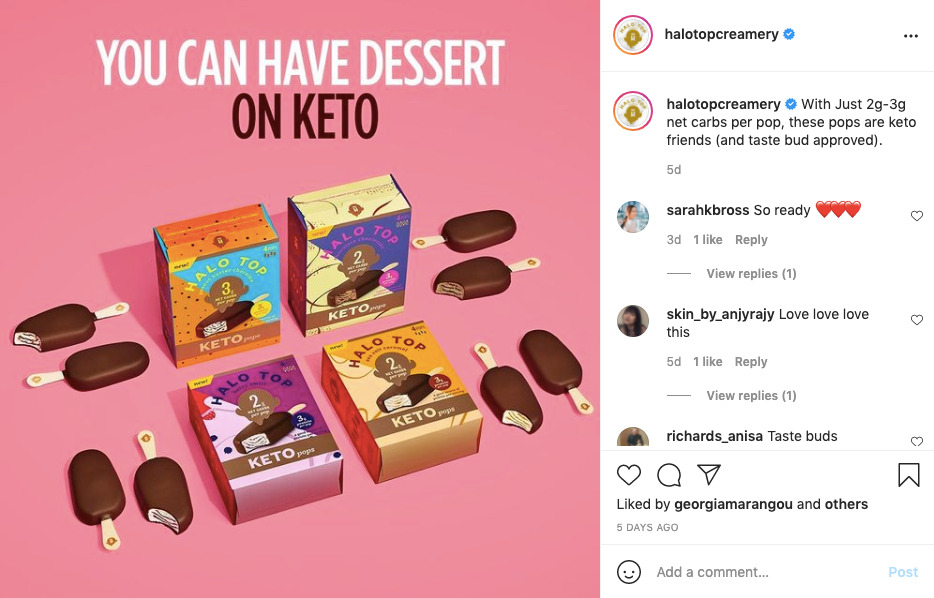
Then check out its homepage:
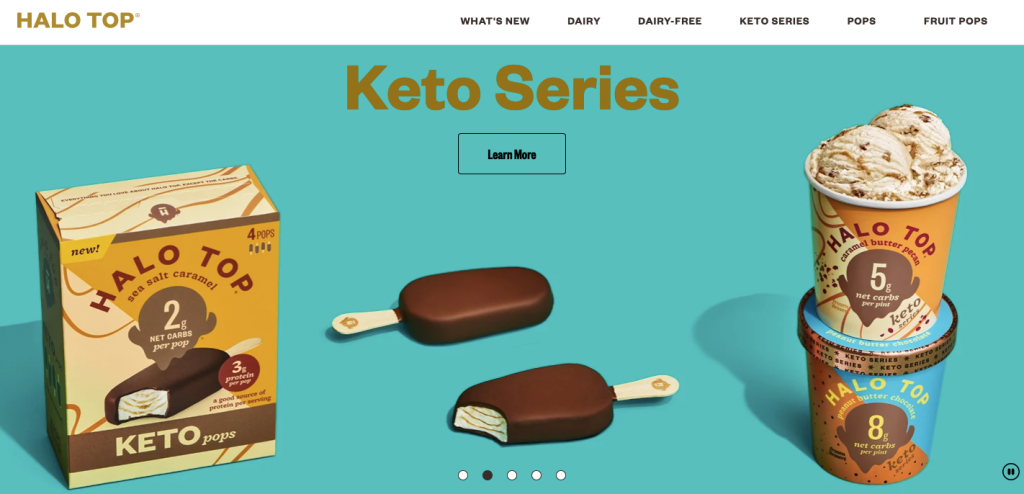
As you can see, it’s adopted the same messaging, the same imagery, and the same vivid color scheme across both platforms. That means the user journey feels completely joined up – you don’t suddenly land on the website and wonder if you’re in the right place.
In other words, imagery, visual marketing, and consistent messaging are super important. If you don’t have the time or resources to do it in-house, consider using a freelance website to hire a graphic designer to do it for you – it’ll definitely be worth the investment.
Best Social Media Strategy Examples #5: Take Advantage of User-Generated Content
User-generated content (UGC) is gold dust for brands. It’s basically word-of-mouth marketing online.
Why? Because consumers love – and trust – it, which makes it extremely valuable for building a bought-in following and generating conversions through social media. Four-fifths of consumers say UGC highly influences their purchasing decisions, while just one in eight say the same about content created by brands themselves.
Not only is it highly impactful, but it also takes comparatively little effort to produce. Why spend hours creating your own content when you could simply launch a campaign incentivizing your audience to do all the hard work for you?
Despite these obvious advantages, so many brands still haven’t woken up to the potential of user-generated content.
Action camera brand GoPro is one of the few that’s getting it right. It regularly runs competitions encouraging its audience to share their favorite photos and videos, all of which are – of course – taken on GoPro cameras.
By simply offering a $250 cash prize and a social feature, GoPro generates a ton of amazing content, like this example from photographer Jitendra Singh:
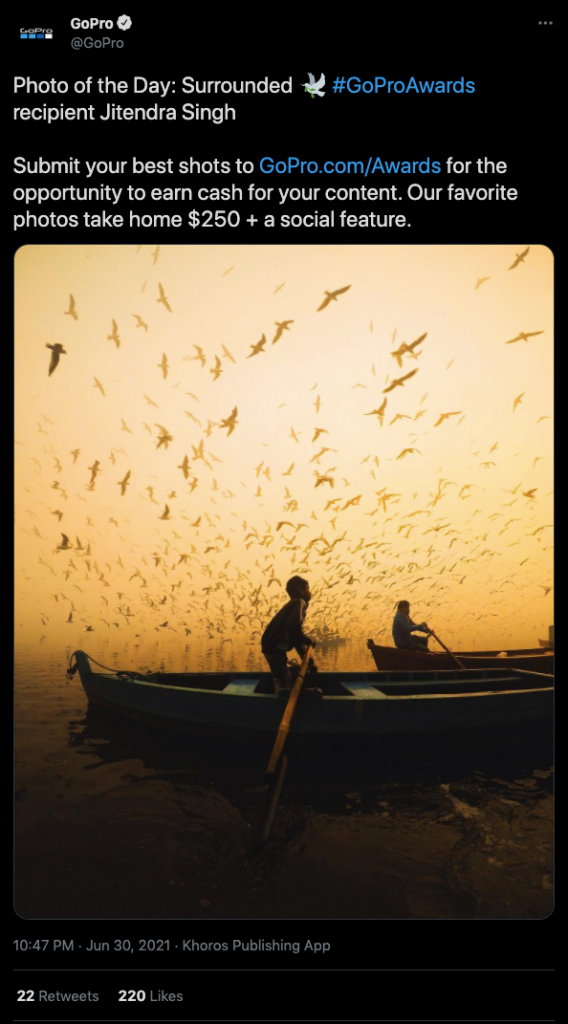
When you think how much it’d cost to hire a photographer to take an image of that quality, $250 feels like a tiny investment.
Best Social Media Strategy Examples #6: Tailor Your Content to Different Social Platforms
It takes time to produce and schedule quality social media content.
Once you’ve created a week’s worth of posts for one platform, it can be all too tempting to simply duplicate them across your other social profiles.
But different social networks have very different audiences. For instance, Instagram skews female and over-indexes among the 25 to 34-year-old age group, whereas Twitter is male-dominated and is most popular among people aged 30 to 49.
In other words, if you’re replicating the exact same content across multiple channels, you’re likely missing the mark on most (if not all) of them.
Instead, you should be tailoring your content to each individual social network.
To see this in action, let’s look at a couple recent posts from Amazon. Here’s a consumer-facing post published on Facebook:
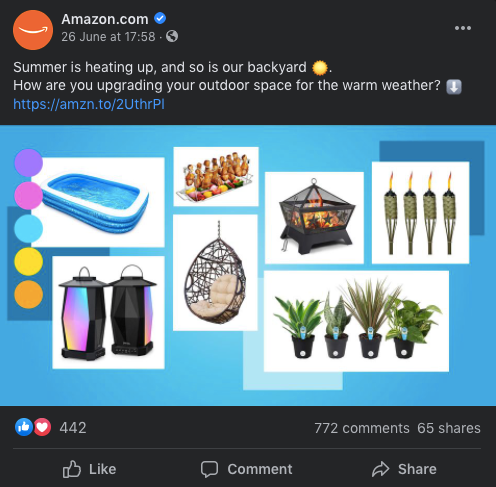
And here’s a distinctly B2B-flavored post from Amazon’s LinkedIn account:
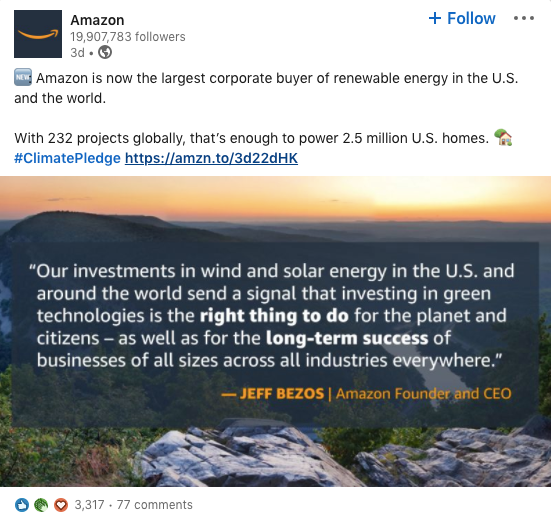
Whereas Amazon’s Facebook strategy is clearly to drive sales of specific products, it uses LinkedIn to raise awareness of its sustainability and corporate social responsibility programs.
B2B businesses in particular tend to gravitate towards the latter platform, as there are plenty of opportunities to find leads on LinkedIn.
Importantly, each of those posts has a lot of engagement, but neither would likely resonate if it was posted on the other platform.
Another good example is personal injury lawyer, Attorney Brian White’s Facebook page post here:
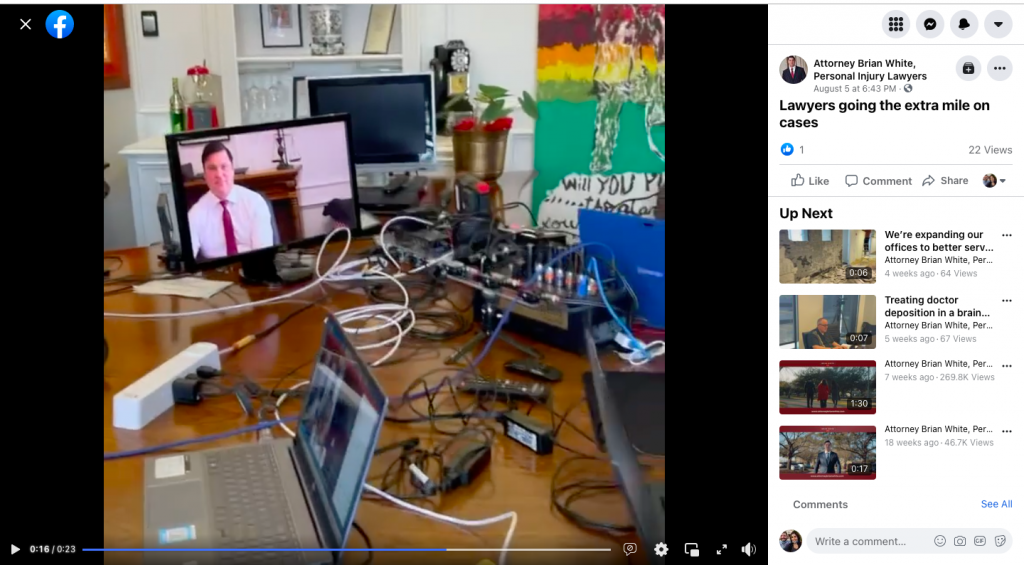
This behind the scenes video does great on Facebook where the approach to your audience is meant to be more casual but it certainly would not fit in very well on the website landing page that is dedicated to bringing in leads.
On a page like that, Attorney Brian White does well to include a more professionally shot introduction video that is relevant to audiences who are curious about his services.
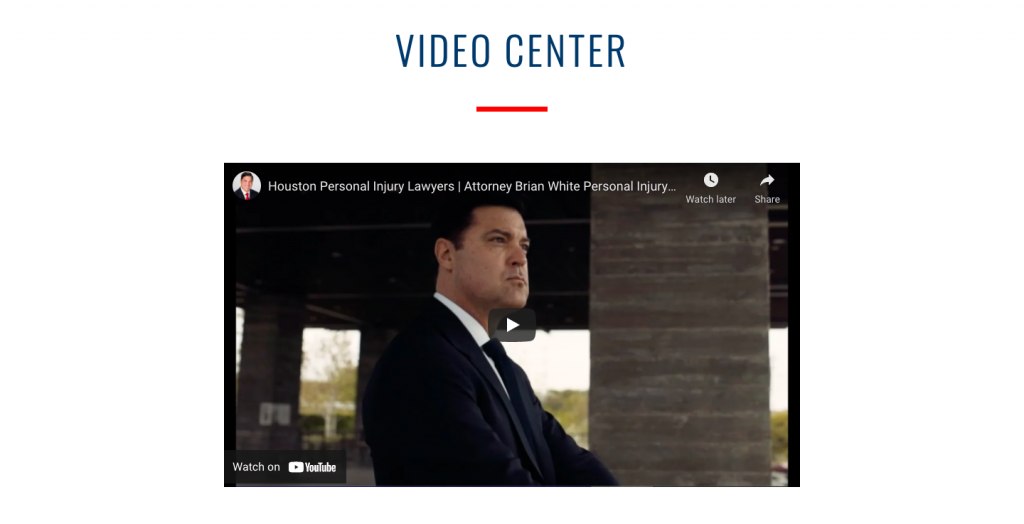
Wrapping It All Up
These social media strategy examples demonstrate that social platforms can be a key driver of conversions – provided you get your strategy right.
That means speaking authentically to your audience, offering them content they want to engage with, and ensuring they’re able to seamlessly navigate from your social profiles to your website.
About the author: Freya is the founder of the personal finance blog CollectingCents that teaches readers how to grow their passive income, save money, improve their credit score, and manage debt. She has been featured in publications like Business Insider, Fox Business, the Huffington Post, and GoBankingRates.
What Is WooCommerce Product Slider and Why Your Store Needs It
Why Do Product Images Matter So Much in Online Stores? When someone visits an online store the…
0 Comments9 Minutes
How to Streamline Your Customers’ Shopping Experience?
The goal for any online store is to make shopping as smooth as possible. When visitors move…
0 Comments8 Minutes
Strengthening Brand-Customer Relationships Through Gamified Loyalty Programs
Creating lasting connections with customers has become increasingly vital as the marketplace grows…
0 Comments6 Minutes
How to Use SEO and SEA Together in Search Engine Marketing
In digital marketing, search engine marketing (SEM) plays a critical role in improving online…
0 Comments10 Minutes
Content Marketing Growth Hacks: Real Shortcuts to Drive Traffic
Are you still lagging in content marketing? Sticking to these old strategies seems…
0 Comments10 Minutes
How to Build a Strong Local Following Using Social Media Marketing
In the days of likes, shares, and stories, local businesses have a golden opportunity to create…
0 Comments9 Minutes
Why WooCommerce is the Best Choice for Your Online Store?
WooCommerce stands out as a top option for anyone looking to build an online store. This platform…
0 Comments8 Minutes
How to Use AI-Powered SEO Tools for WordPress eCommerce
SEO is a critical factor in the success of any e-commerce WordPress store. As competition…
0 Comments11 Minutes
